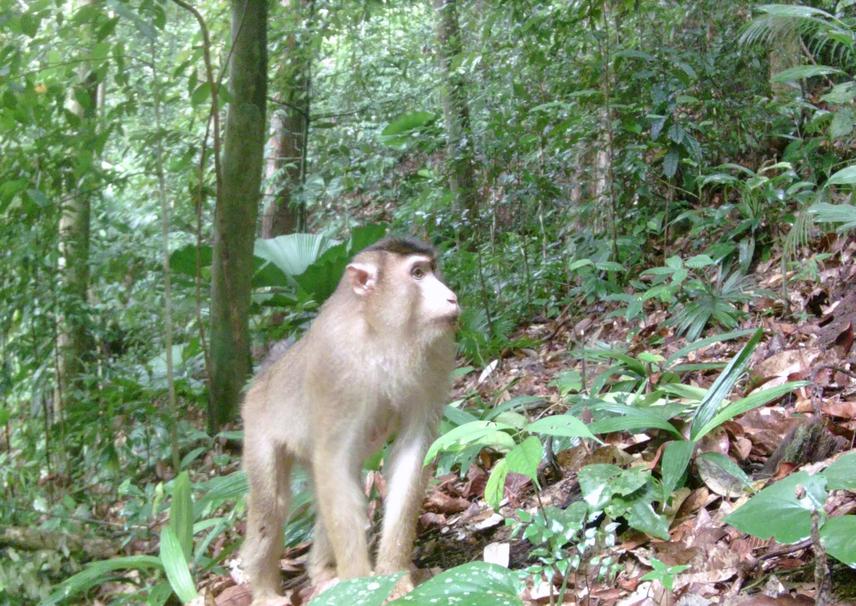Lim Wing Shen
This research project intends to evaluate the long-term impact of establishing artificial salt-licks for wildlife monitoring and management at Kawang Forest Reserve (KFR), which is presently being managed as a total protected forest in Sabah, Malaysia. Specifically, this project aims to:
1) Investigate visitation pattern of wildlife to the established artificial salt-licks at KFR;
2) Examine the degrees of effects of the variations in local environmental conditions over wildlife visitation pattern to the established artificial salt-licks at KFR;
3) Evaluate the interaction between different wildlife species in using the established artificial salt-licks at KFR, and lastly;
4) Ascertain the long-term impact of human visitation upon the visitation pattern of wildlife to the established artificial salt-licks at KFR.

Beruk. ©Lim Wing Shen.
Generally, a majority of past studies have focused on reporting the number of species, and also their respective frequencies, which can be detected at the established artificial mineral licks. Nonetheless, impact of establishing artificial licks for wildlife monitoring and management, especially in tropical rainforest of Sabah, Malaysia, are yet to be examined by the given past studies. Mineral licks are critical to the well-beings, especially for the elusive, threatened and large-sized non-volant mammal species with plant-based diets. Vegetation in inland tropical rainforest is sodium deficit, thus triggering the given species to exhibit high lick dependencies for mineral intake at a regular basis.
Visitation patterns of terrestrial wildlife are highly dependent to both the onsite and surrounding environmental conditions of the mineral lick, and also traits of the species-in-question. Because of that, changes in onsite and surrounding environmental conditions have detrimental impacts towards wildlife visitation pattern, in terms of the visitation frequency and duration, diel activity pattern, group size, species diversity and composition, to a given lick and at a specific time and season. Since artificial licks can be established at any location within a forest, thus their establishments can alter the movement pattern of a given species, and subsequently modifying movement patterns of other sympatric species, within a certain forest landscape.
The degree of influence of establishing artificial licks to the wildlife community in tropical rainforest of Malaysia remains uncertain at this moment. Therefore, this research project intends to provide a comprehensive understanding onto the given matter. Besides that, wildlife community is hardly detected through field survey, especially in KFR, thus information on the local wildlife community remain scarce at this moment. This forest reserve is both highly accessible and frequently used by human, thus this project intends to determine the existing species of wildlife presented at this forest landscape. This piece of information is essential to the management party, which is Sabah Forestry Department, in decision making and future management planning. Moreover, findings of this project can help researchers to validate the degrees of influences of various aspects of both onsite and surrounding environmental conditions towards the wildlife visitation pattern to established artificial licks in this forest landscape.
Header: This picture shows a waterfall that is situated in Kawang Forest Reserve. This waterfall serves as a clean water source for the surrounding communities. This picture is taken using my own phone at 4th September, 2020.